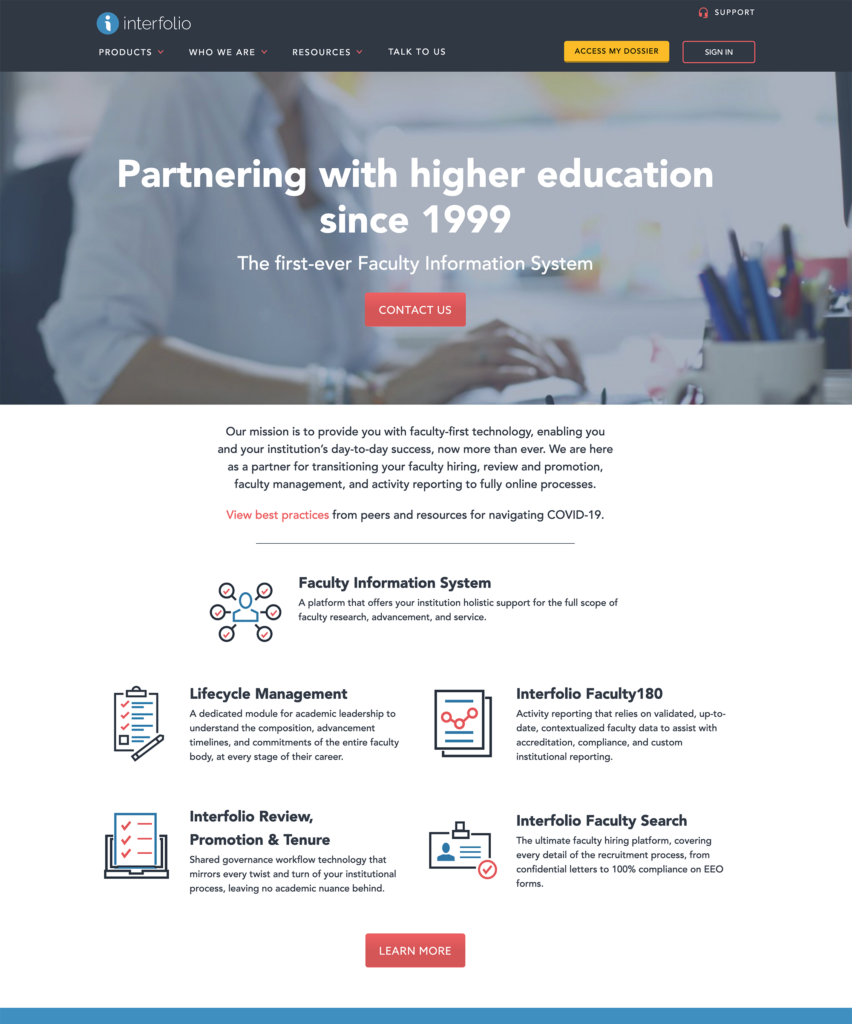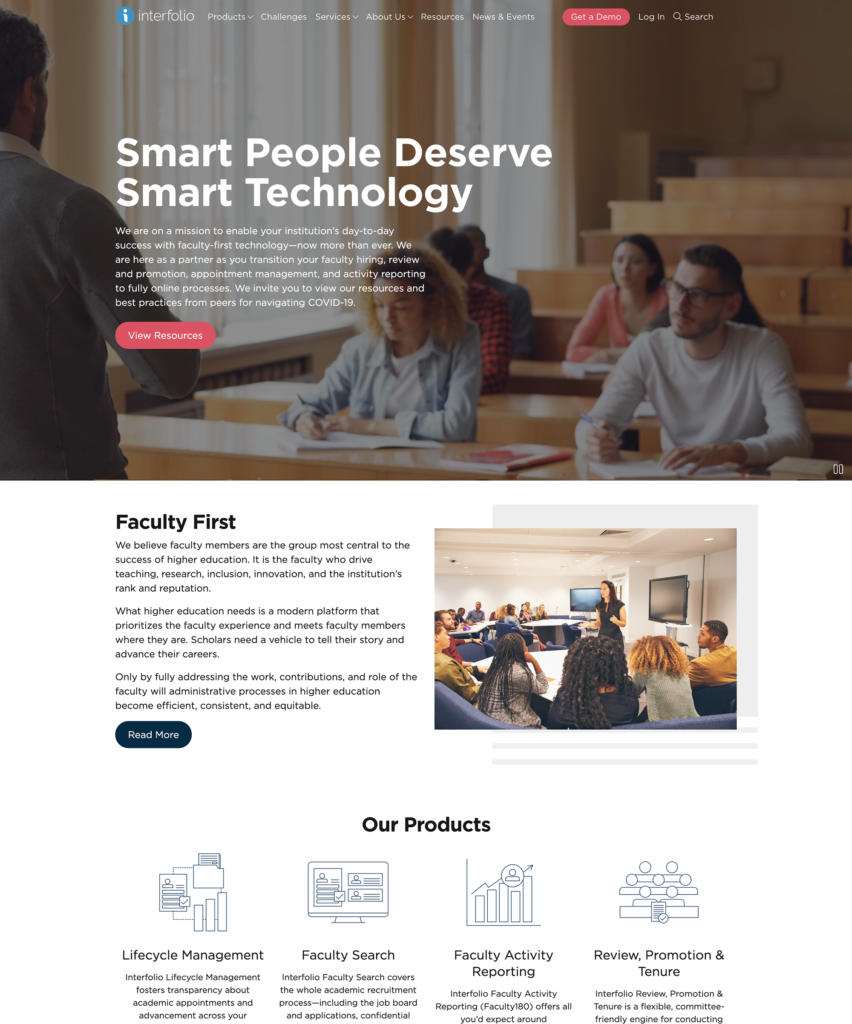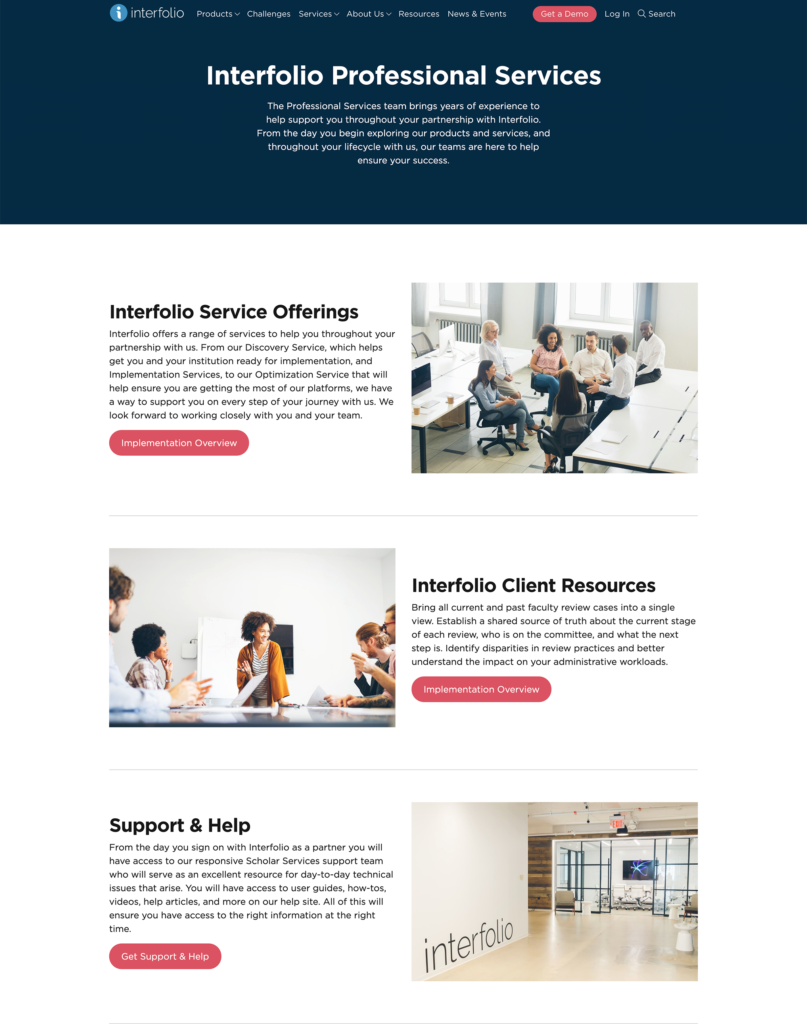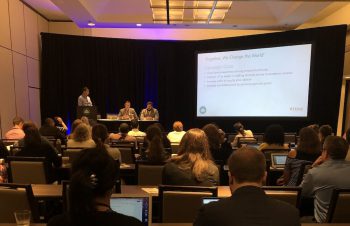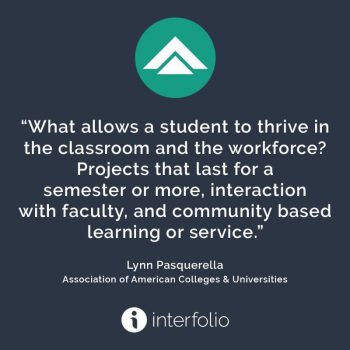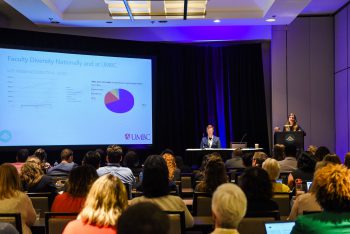Today, I am pleased to announce the launch of the Interfolio Data Service (IDS), the latest offering in our leading Faculty Information System. An incredible amount of time and hard work has gone into making this vision come to life—both from our team and our higher education partners—and I’m beyond excited to share it with you.
Let’s start with: What is IDS?
IDS is our new product that further expands our faculty-centric approach to scholarly data. Combined with our market-leading platform, the Interfolio Data Service fuels a centralized hub of faculty data—and starts to showcase our concept for the academic data ecosystem at large.
IDS federates, disambiguates, and makes actionable the scholarly work of faculty and offers a unique validation process. Faculty are preemptively presented with matched scholarly output and have the ability to continuously claim these outputs as their own—which results in updated, accurate, trustworthy data for both the faculty and the institution. After validating, records are saved to faculty’s profiles in Faculty Activity Reporting, enabling reporting for reviews, accreditation, CVs, and more.
Challenges
In conducting multiple years of research and discovery with our clients and Product Advisory Committee, we repeatedly heard similar pain points:
- It is immensely time-consuming and difficult for schools and individuals to compile the data, from multiple sources
- Institutions struggle to accurately match data to specific faculty members—which Jane Smith is the Professor Jane Smith at their institution?
- Faculty profiles are not accurate, in part because there is no incentive to update
- Manual entry and compilation are often the norm
- Data immediately becomes outdated after a data import or one-time CV parsing
- Data remains unreliable, siloed, and untrustworthy
Vision
In response to these many challenges, we developed the Interfolio Data Service to be higher education’s new path to accurate and reliable faculty data. While we have long supported API integrations of data within Faculty Activity Reporting, the Interfolio Data Service goes much further in breadth of sources, ease of regular data imports, value for faculty, and actionability of the data.
As IDS evolves, institutions will have access to an ever-expanding network of sources. And, our data service will get smarter; the more scholars validate, the better our algorithms will become, so, for each institution, we can strike the right balance between breadth of incoming data and accuracy of that data. All in all, IDS offers a machine learning approach to reducing your scholars’ challenges to maintaining an updated and accurate faculty profile.
You also might recall that last year we acquired Researchfish, the global leader in research impact tracking, used by hundreds of funders, universities, and research centers. With the combination of IDS and Researchfish, you are starting to see the possibilities of how modern universities can truly demonstrate academic impact through scholarly data.
Faculty Information System
During the current pandemic (but certainly pre-dating it too), institutions are under mounting pressure to manage costs while also increasing visibility into faculty contributions and workloads. This trend is echoed by Gartner and Eduventures, who identified Faculty Information Systems as a key way that institutions are adopting technology to support faculty and manage previously manual, burdensome processes.
We continue to strategically invest in the interoperability of our four Interfolio modules, with the ultimate goal and vision of helping modern higher education institutions succeed. IDS is the latest contribution to this essential endeavor.
I invite you to join us for a free webinar about Faculty Activity Reporting and Interfolio Data Service on Thursday, October 29, 2020. Emory University will share a case study on how they use Faculty Activity Reporting and their planned use of IDS, and we’ll give you a deeper look at this exciting new offering.
Sign up to receive news about higher education careers, faculty affairs, and research impact tracking!




